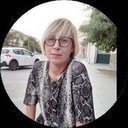
Knights, sailors and crusaders
#history #poetry
He lived with his mother in Cornwall:
one day transposed into the bush.
In the bush one day, between cerro and cerro
He saw an all-iron man pass by.
Morvàn thought it was St. Michael:
Kneeling: Lord St. Michael,
don't hurt me, for God's sake!
Neither I do it, nor San Michel is me.
No: St Michael's can't call me:
Cavalier, yes: I'm knight of arms.
A Knight? But what is it ever?
Look at me or son and what it is you will know.
What is this long greve wood?
The spear: he is thirsty, and where he comes, he drinks.
Which is this thing you are girded about?
Sword, if you won; cross if you are won.
What do you dress? The robe is weighing and hard.
It's iron. Son, this is the armor.
And you were born already so covered?.
He laughed and replied the cavalier: No, sure.
And who put it, then, do I wear it to you?
Who can. Who can?. But, dear son, the king! (John Pascoli, Breus)
Around the year 1000, the social ladder included knights, artisans, traders, farmers and serfs. If the peasants were forced to be oppressed, that is, to serve the feudal lord in exchange for protection, the serfs were little more than slaves, they could not leave the land they cultivated and were sold with them.
Having reached a minimum of peace and stability, the cultivations introduced by the Arabs began to spread and some old irrigation and reclaim systems returned to being used. A little more was produced than was consumed and therefore exchanges and trade resumed. An almost forgotten thing came back into vogue: money. The streets were once again populated by travelers, the fairs were animated by merchants.
At the intersection of the streets, markets were born, artisans gathered around the markets and, little by little, villages were formed. Some were completely new, others were ancient Roman cities that were resurrected. In the villages lived the bourgeois, that is the merchants and artisans of wool, iron, wood, leather. Often those who practiced the same trade gathered in the same street.
In Italy, the first inhabited centers to become rich through trade were some seaside towns, those that later will be called maritime republics: Venice, Genoa, Pisa, Amalfi, plus other smaller ones, which traded fabrics, precious stones, spices to flavor and preserve food. The merchants of the maritime republics went to the East to buy goods and resold them in Europe at a high price. With the gold imported from Africa, with the silver excavated in the mines of Spain, France and Germany, new coins were minted and began to circulate, replacing Arab and Byzantine money and bezanti. New discoveries illuminated these centuries wrongly considered dark, among them the compass.
Travelers told wonderful stories about the customs of oriental peoples, about the riches that were found in those countries, about the exotic animals that populated them. However, they also told of the places that had known the passion and death of Jesus now in the hands of the infidels, of the Muslims who killed Christian pilgrims in the Holy Land. Thus the idea of a reconquest of those sacred places made its way and the Crusades were born. At the cry of “God wills it” many crimes were committed.
People truly moved by faith were leaving for Jerusalem. It should be noted that even devout and pious souls such as St. Catherine of Siena herself incited war in the name of God. However, knights without fiefdoms, cadet sons, ordinary people who hoped for a rich booty also left. They left mainly by sea and the maritime republics were enriched even more with the transport of the Crusaders, that is, those fighters who left for Palestine with a red cross pinned on their chest.
Jerusalem was conquered but the conquest did not last long and the Muslims took back the lands from which they had been expelled. Other crusades were organized by popes, emperors, kings, there were seven in the space of two hundred years. But the Turks and Muslims prevailed.
The Crusades failed their purpose, which was to definitively conquer Palestine, but they increased trade with the East and imported from those lands new systems of cultivation of the fields and processing in the workshops.
- Comments (0)
- Recommended
- Milestones
Here are your recommended items...
Here are your milestones...



